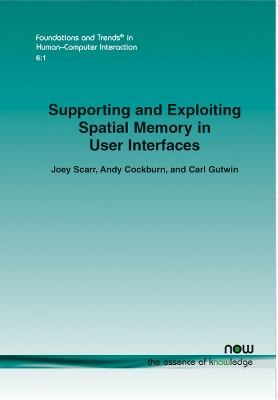Spatial memory is an important facet of human cognition - it allows users to learn the locations of items over time and retrieve them with little effort. In human-computer interfaces, a strong knowledge of the spatial location of controls can enable a user to interact fluidly and efficiently, without needing to visually search for relevant controls. Computer interfaces should therefore be designed to provide support for developing the user's spatial memory, and they should allow the user to exploit it for rapid interaction whenever possible. However, existing systems offer varying support for spatial memory.
Many modern interfaces break the user's ability to remember spatial locations, by moving or re-arranging items; others leave spatial memory underutilised, requiring slow sequences of mechanical actions to select items rather than exploiting users' strong ability to index items and controls by their on-screen locations.
Supporting and Exploiting Spatial Memory in User Interfaces highlights the importance of designing for spatial memory in HCI. It summarizes empirical results on spatial memory from both the psychology and HCI domains, identifying a set of observable properties of spatial memory that can be used to inform design. It also analyses existing interfaces in the HCI literature that support or disrupt spatial memory, including space-multiplexed displays for command and navigation interfaces, different techniques for dealing with large spatial data sets, and the effects of spatial distortion.
This book provides strong evidence that spatial knowledge of controls and data enables rapid interaction and information retrieval, and allows users to focus more of their cognitive resources on the task at hand, rather than on the interface. It is aimed at user interface designers, as well as other HCI researchers interested in spatial memory.
Useful guidelines for designers are identified throughout the book, which provide clear advice on how and when to design with spatial memory in mind. Similarly, the concluding summary of the area, as well as methodological cautions and directions for future research provide an excellent resource for scientists interested in the importance of spatial memory in user interfaces.
- ISBN13 9781601987464
- Publish Date 5 December 2013
- Publish Status Active
- Publish Country US
- Imprint now publishers Inc
- Format Paperback
- Pages 100
- Language English
- URL https://nowpublishers.com/article/Details/HCI-046
